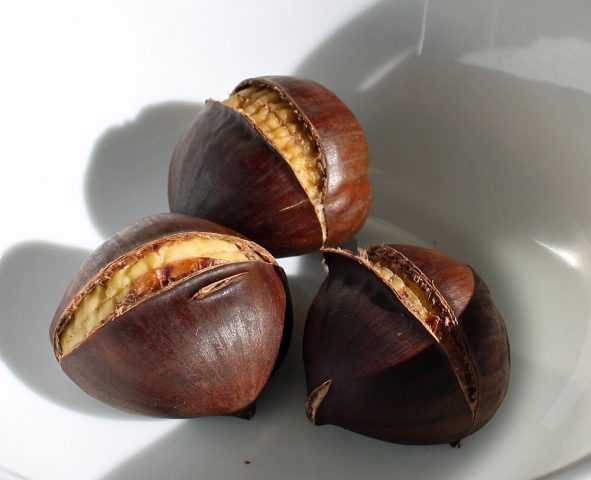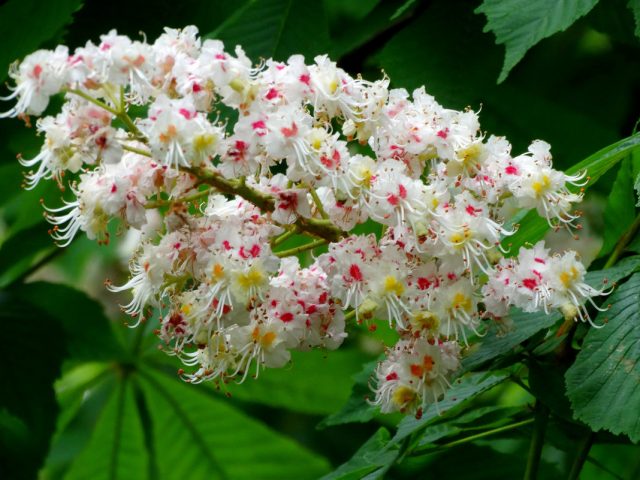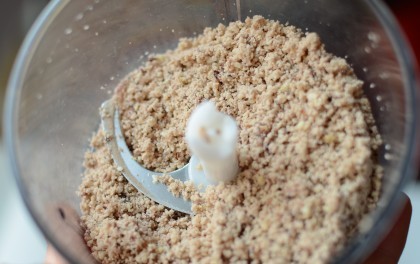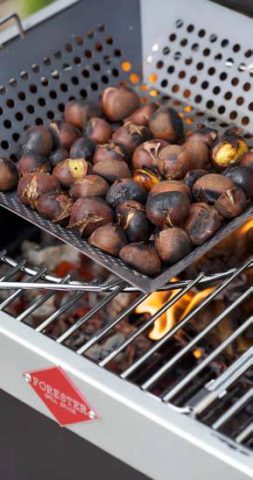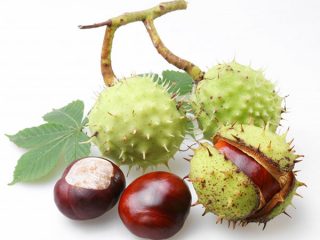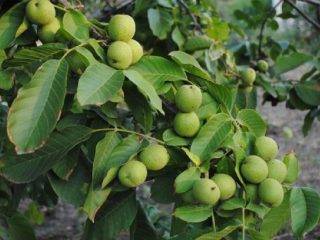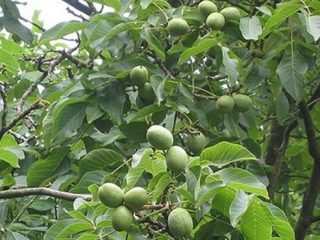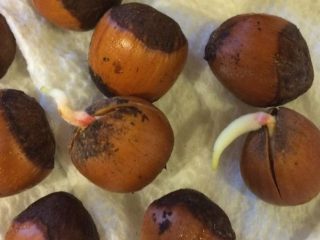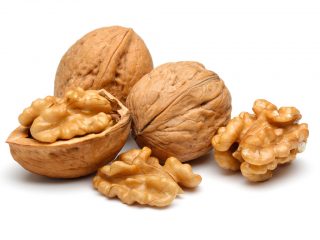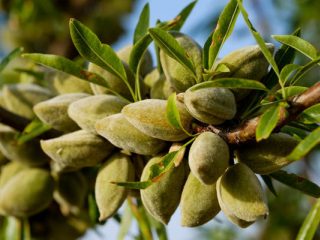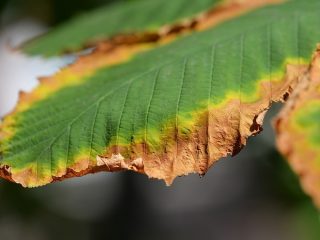Content
Edible chestnuts are a delicacy for many people. These fruits contain many useful substances necessary for humans. The recipe for cooking chestnuts has been familiar since ancient times and has not changed much. Rules for using chestnut fruits in folk medicine and cooking below.
What are the benefits of chestnut?
In the chestnut tree, all parts of the plant are useful:
- bark;
- flowers;
- fruit;
- leaves.
They are widely used in folk and official medicine to treat various diseases. Culinary specialists and cosmetologists have also long ago paid attention to the edible chestnut and found a use for it. On the shelves of pharmacies and stores you can find creams and shampoos that use different parts of the tree.
The fruits are rich in fiber (2-3%) and minerals (3%). The composition of chestnuts includes:
- vitamins A, B, C;
- coumarin glycosides;
- triterpene saponin;
- escin;
- fatty oils – about 7%;
- proteins – about 10%;
- starch – up to 50%;
- tannins – 1%.
Beneficial properties of chestnut nut
We can talk for a long time about the health benefits of chestnuts, and this is not surprising. After all, all parts of this plant have unique properties:
- Dilate arteries and promote normal blood circulation. As a result, blood clotting is reduced, veins dilate, and the risk of thrombosis disappears.
- The fruits of chestnut trees are recommended for use by people suffering from hemorrhoids.
- If your legs are tired and your muscles have lost their tone, then you can use the recipe and prepare a decoction of the juice of the inflorescences and make foot baths.
- For a runny nose and sore throat, a recipe that uses 50 g of chestnut tree bark is suitable. It is poured with 1 liter of boiling water and left for 30 minutes. Rinsing the nasopharynx with a decoction helps to quickly get rid of the problem.
- Edible chestnut fruits contain tannins. That is why they are used to heal wounds and treat burns.
- Using different recipes, you can get rid of rheumatism, problems with the gastrointestinal tract, and get rid of weeping, non-healing wounds.
- 2 nuts a day are enough to lift your tone and mood.
- Doctors and traditional healers recommend that women with breast problems place the fetus in their bra and massage it with its help.
Medicinal properties of chestnut flowers
As already mentioned, not only the fruits, but also the inflorescences of the plant have beneficial properties. There are many recipes for preparing various potions from chestnut flowers, but each of them is effective if there are no contraindications. Flowers are collected at the very beginning of flowering, until the ovaries have formed.
Recipe options for using flower juice:
- can be used externally by adding it to various ointments;
- drink the squeezed liquid a few drops after breakfast and dinner;
- Here is another recipe: the collected flowers can be poured with vodka and left for 30 days. Drink 50 drops as a tonic before eating;
- Fresh chestnut juice stops external bleeding. But if the bleeding is internal, then you can drink the juice only with permission and under the supervision of your doctor. According to the recipe for 1 tbsp. Add 30 drops of juice to water. Reception – 2 times a day.
With the help of flower infusion, you can get rid of varicose veins and relieve fatigue in the legs. To do this, just brew the petals and make a bath.
The use of chestnut in treatment
The medicinal properties of chestnut nuts have been studied for a long time and are used in traditional and official medicine. With the help of various parts of the plant, diseases such as:
- sinusitis;
- joint problems;
- heart;
- phlebeurysm;
- thrombophlebitis.
How to treat sinusitis with chestnut
A disease such as sinusitis occurs quite often in people of different ages. To avoid damage to the sinuses, you can use a medicine based on horse chestnut fruit. This plant has inedible fruits that are not recommended for consumption. But its medicinal properties are excellent.
Horse chestnut contains a substance that can kill viruses and fungi that multiply in the maxillary sinuses. In addition, when it gets into the nose, the infusion of the fruit causes sneezing, which helps remove mucus and clots of pus from the nose.
You can be treated not only with infusions, but also with raw chestnuts. They need to be soaked in water first to remove the tough skin. Crushed white kernels should be inserted shallowly into the nasal entrance.You can mix the kernels with honey if this product does not cause allergies. Treatment lasts 1.5-2 hours a day. The course is designed for 5-9 days, depending on the severity of sinusitis.
Chestnuts for treating joints
As many people age, their joints begin to bother them, reducing their physical activity. But, the main thing is not even this, but constant pain, which is difficult to get rid of.
Chronic joint diseases are practically untreatable, but physical ailments can be alleviated if treated with horse chestnut. Most often, a healing tincture is prepared from the fruits. The recipe requires 1 liter of vodka and 500 g of chopped chestnut kernels.
For grinding you can use a coffee grinder, meat grinder, blender. Then pour good quality vodka over the fruits. After 21 days, the tincture will be ready for use. The container must be kept in a warm and dark room all this time so that there is no access to light.
The finished medicine must be strained, then rubbed into the sore joint several times a day. After the procedure, the painful part is wrapped in a warm scarf.
Chestnut tincture can be used not only externally, but also internally. For several days after eating, drink 40 drops of the medicine and wash it down with warm boiled water.
Chestnuts for varicose veins and thrombophlebitis
The benefits of chestnut for the human body cannot be overestimated. In folk medicine, there are recipes that use inflorescences to solve problems with varicose veins. To prepare an alcohol tincture you will need 50 g of flowers and 500 ml of high-quality vodka.
The collected inflorescences are placed in a dark glass bottle and filled with vodka. The vessel is placed in a dark room for 14 days. The contents are shaken from time to time. You can use the tincture after filtering, 30 drops half an hour before meals. Take drops 3 times a day every day for 30 days.
For the treatment of thrombophlebitis, the recipe will be slightly different:
- vodka – 100 ml;
- chopped chestnuts – 10 g.
To grind the fruits, use a blender or coffee grinder. The powder is poured with vodka and kept in a dark place for at least 10 days. After this, the contents are filtered and poured into a sterile jar.
Features of administration: each time before meals, add 30 drops of tincture to 60 ml of water. The course of treatment lasts no more than 14 days, then take a break for the same amount of time.
How to cook chestnuts at home
Most often, the fruits of the chestnut tree are fried or baked. The procedure is simple, but there are some nuances that you should pay attention to:
- Wash the nuts in the shell with cold water and dry well.
- Before baking or frying, each fruit is cut with a sharp knife from the convex part. The lower, flat part of the nut should remain intact. Incision is a necessary procedure, otherwise the fruit will burst during heat treatment.
- Place the chestnuts in the container first on the flat side, then begin to stir vigorously.
- By the time of readiness, each fruit opens at the site of the incision.
- Chestnuts should be peeled immediately while they are hot. If your hands cannot stand high temperatures, you can wear gloves.
To prepare a delicious dish you can use:
- a frying pan with a thick bottom and walls or a cauldron;
- oven;
- microwave;
- grill;
- multicooker.
How to fry chestnuts at home in a frying pan
No oil is required to fry the fruits of the chestnut tree in a frying pan or in a cauldron. The process is carried out in a dry container.
The cut fruits are laid out in one layer and fried with constant stirring for no more than 30 minutes.
In the oven
The oven is heated to 250 degrees. The cut chestnuts are laid out on the surface of a dry sheet and placed in the oven, according to the recipe, for 10-15 minutes. Stir the fruits from time to time so that they bake evenly.
Microwave
For roasting in the microwave, chestnut tree fruits of the same size are selected so that they are ready at the same time.
The fruits, according to the recipe recommendations, are placed in a special container, then filled with water to a third of the volume. Open containers are placed in the microwave at maximum power. After 5 minutes, the dish can be removed and immediately peeled.
Chestnuts are served hot. Cooled fruits have less beneficial properties.
In a slow cooker
The recipe for cooking chestnuts in a slow cooker is not at all complicated. To do this you will need:
- 500 g of nuts with cut shells;
- 4 tbsp. l. any vegetable oil;
- a little salt.
Make cuts on the convex side of the nut, then pour oil over the fruit, sprinkle with salt and mix well.Place the fruits in a bowl and set the multicooker to baking mode for half an hour.
As soon as the signal sounds, the chestnuts are peeled and served.
Grilled
It is convenient to fry chestnuts in a special grill pan. There will be an open fire burning under the fruits, so the work is done outside.
A shallow cut is made on each nut so as not to damage the flesh. The fruits are soaked for 2 hours in cold water. If desired, the water can be salted.
The wet fruits are placed on a grate, under which there are hot coals (this is clearly visible in the photo above).
To ensure that the kernels are juicy and tender, the contents of the grill are stirred, avoiding excessive frying. Readiness is determined by the opening of the shell.
Calorie content of chestnuts
Each product has its own nutritional and energy value. It is different for raw and roasted chestnuts.
Indicators per 100 g of product | Raw nuts | Roasted nuts |
Nutritional value (kcal) | 166 | 182 |
Proteins (g) | 3,4 | 3,2 |
Fat (g) | 3,0 | 2,2 |
Carbohydrates (g) | 30,6 | 33,8 |
Contraindications
Despite the fact that edible chestnuts have beneficial properties, due to contraindications, not every person can eat them.
When nuts are not recommended:
- with high blood pressure;
- for menstruation disorders;
- while carrying a baby;
- if a person has diabetes;
- in the presence of internal bleeding.
Edible chestnut can bring not only benefits, but also harm, so before starting treatment, you need to undergo an examination and get a doctor’s recommendations.
There are several more contraindications, but they relate to the collection of medicinal raw materials - bark, leaves, inflorescences and fruits of chestnut trees:
- there should be no roads in the collection area;
- you cannot collect fruits near factories and landfills;
- Plants growing in the city are also unsuitable for obtaining medicinal raw materials.
The fact is that chestnuts absorb all harmful substances from the air and soil, just like any plants.
Conclusion
Knowing the recipe for cooking chestnuts, you can provide your family with medicines and delicious dishes. It is best to cook the fruits immediately after ripening, before the pulp dries naturally.
